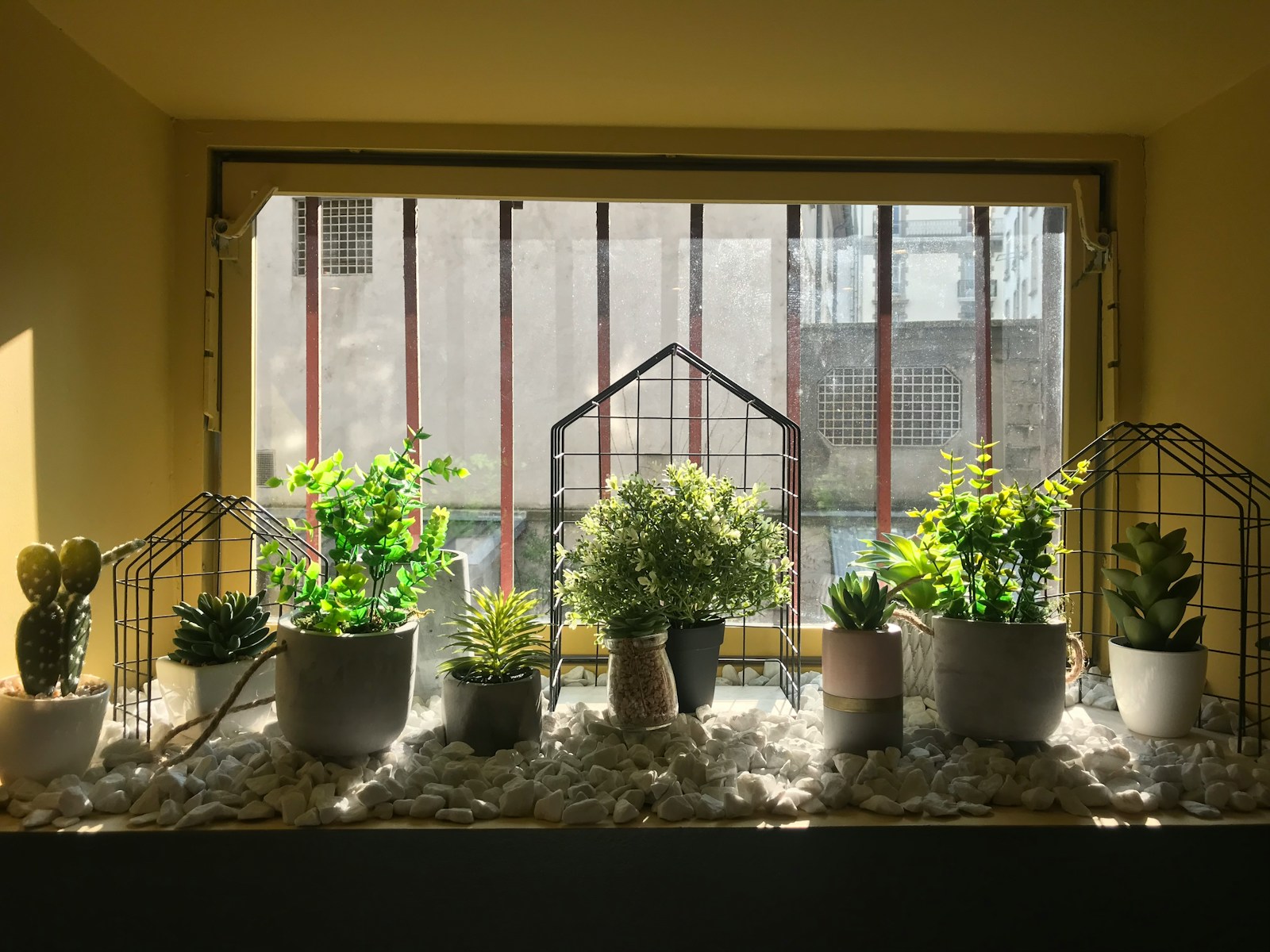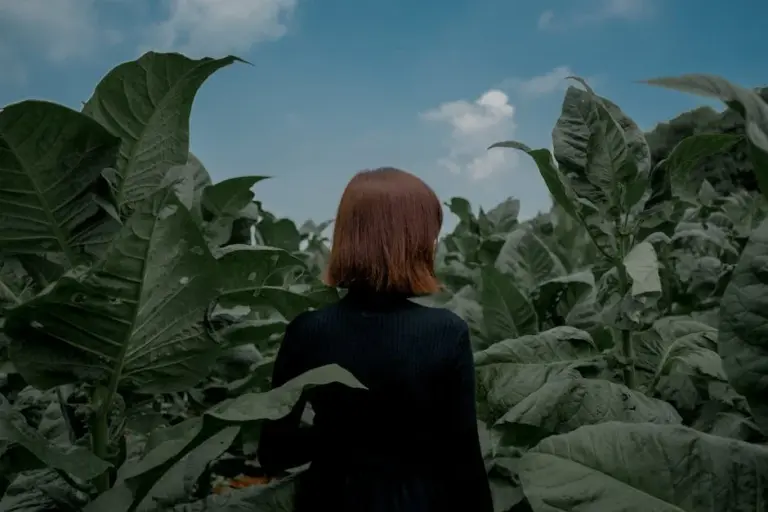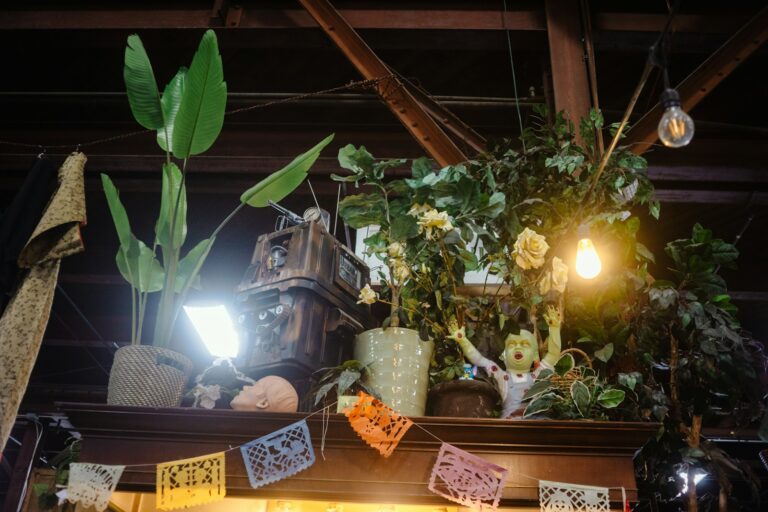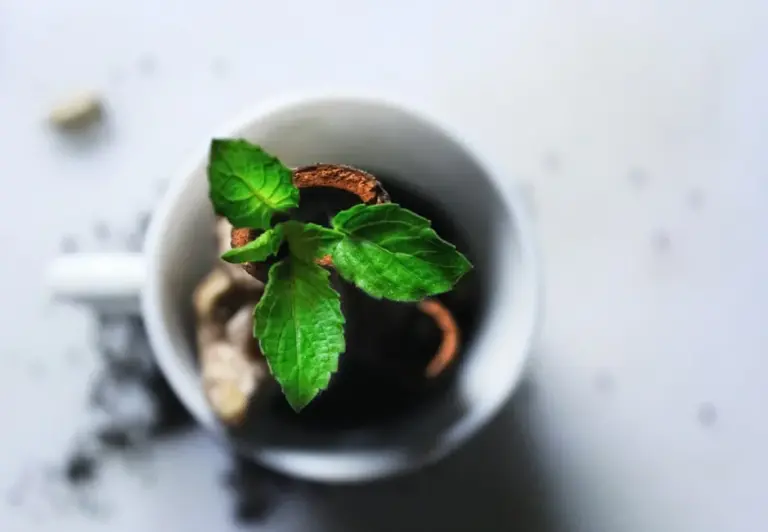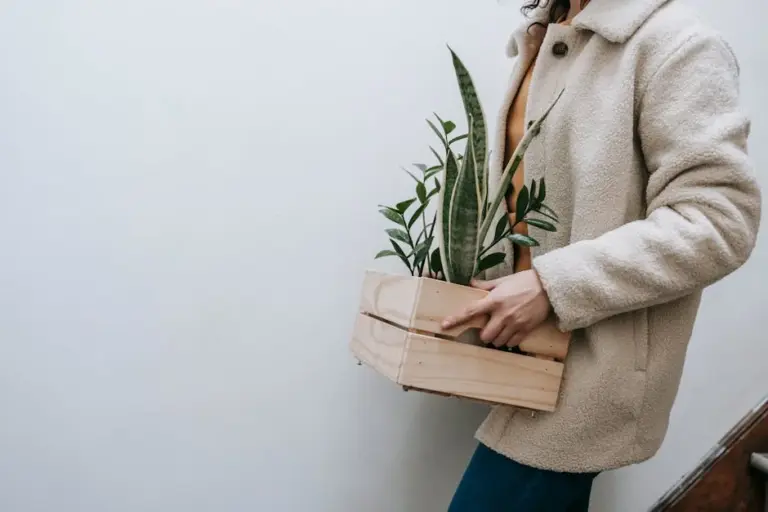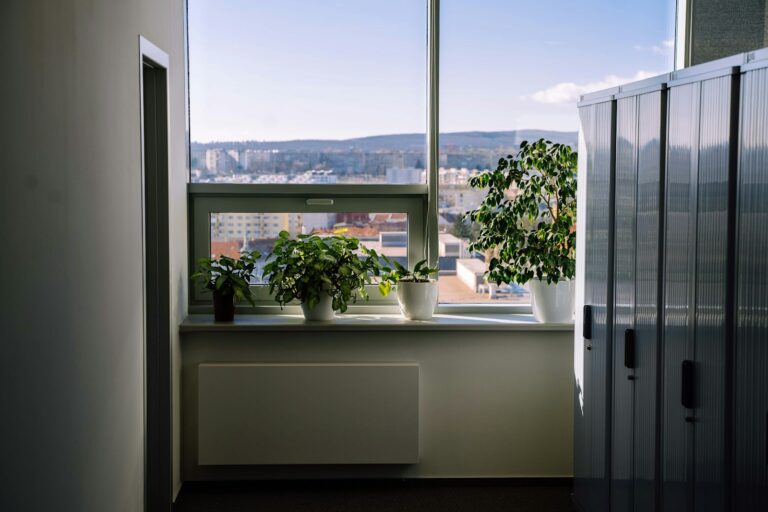How to Care for Houseplants When the Heat Is On Tips to Keep Them Thriving All Summer
As summer temperatures soar, it’s not just people who start to feel the heat. Houseplants notice the change too, and they need a little extra care to keep looking their best.
Hot weather can make it tough for your favorite plants to stay healthy indoors. With a few simple adjustments, you can help them handle the heat and keep thriving.
Keep soil consistently moist but not waterlogged
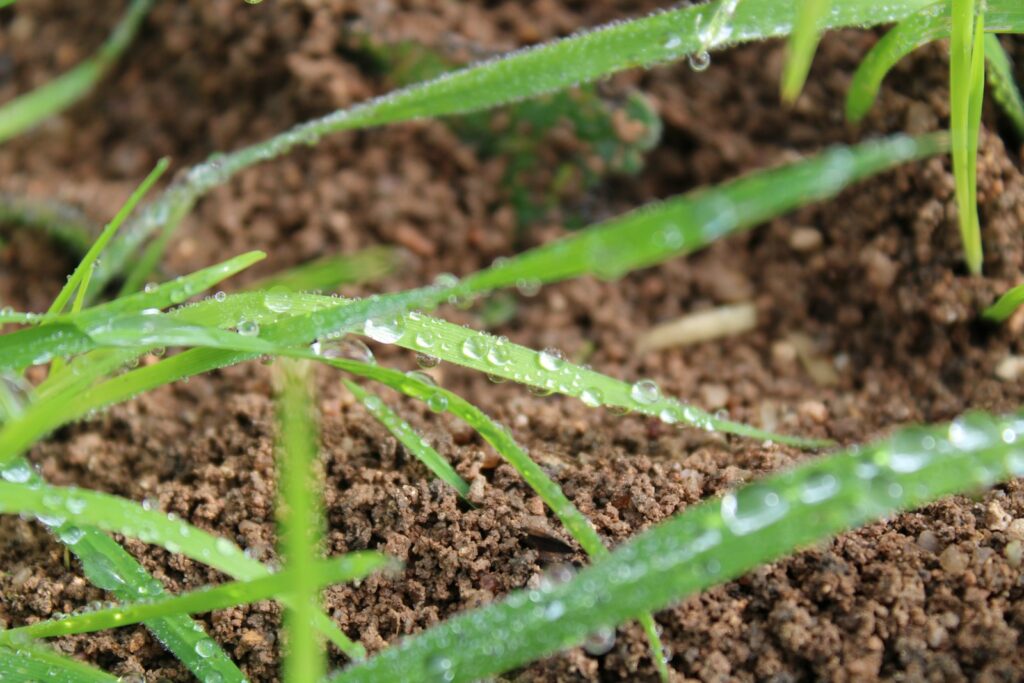
During hot spells, your plants rely on steady moisture in the soil. The goal is to keep the soil damp without letting it get soggy.
Water when the top inch of soil feels dry to the touch. This helps your plant get the hydration it needs while avoiding the risk of root rot.
Adding mulch or organic covers like leaves or straw can help slow down evaporation. These covers keep the soil temperature steady and mean you won’t have to water as often.
Water-absorbing crystals mixed into the soil can also help by soaking up extra water and releasing it slowly. This keeps the soil evenly moist for longer stretches.
Move plants to cooler, shaded spots indoors
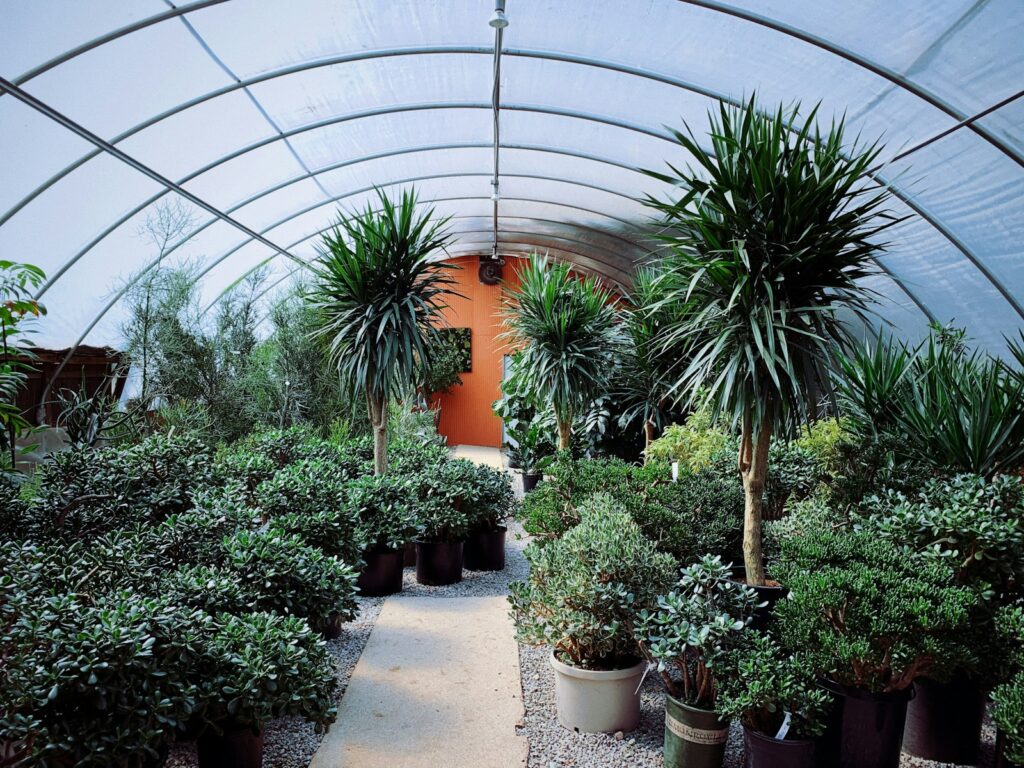
When your home heats up, houseplants can become stressed. Moving them to cooler, shaded areas helps them avoid direct sun and harsh heat.
Try placing plants near windows with filtered light or in cooler rooms. This gives them a break from intense sunlight and helps prevent leaf burn.
Keep an eye on your plants as they settle into their new spots. Warmer temperatures may dry the soil faster, so check the top inch of soil before watering.
Rotating your plants every so often helps them get even light and prevents them from leaning toward heat sources. A little rearranging can make a big difference in their comfort during the hottest months.
Use a humidity tray or humidifier to increase humidity
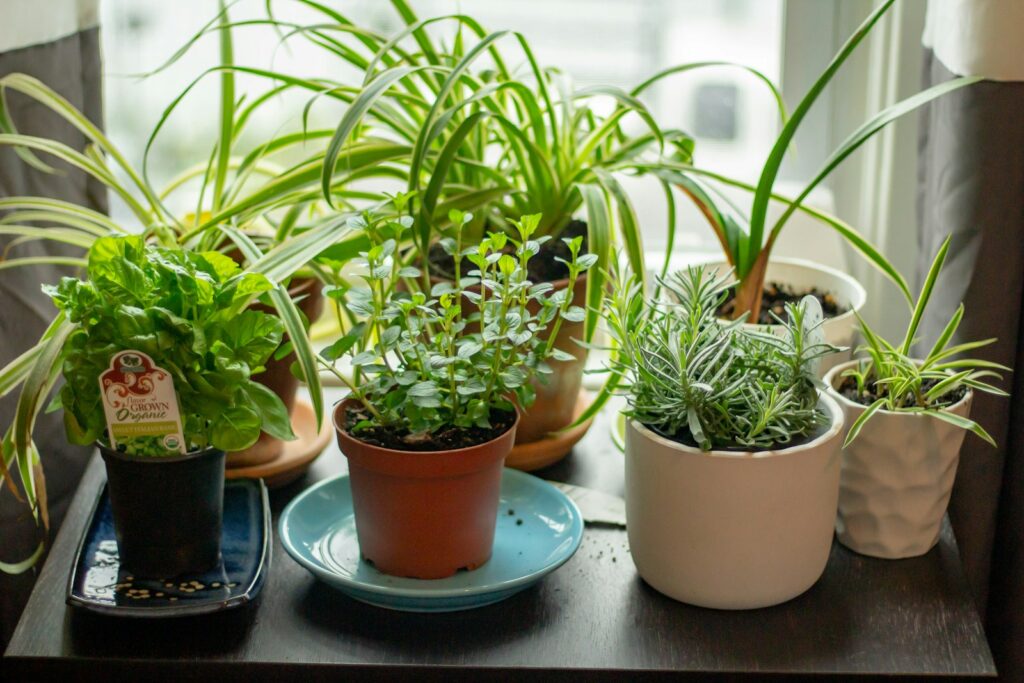
Summer heat can make indoor air feel dry, which isn’t ideal for most houseplants. Setting up a humidity tray is a quick way to boost moisture in the air around your plants.
Fill a shallow tray with water and add pebbles, then place your plant pots on top so the bottoms don’t touch the water. As the water evaporates, it creates a humid pocket your plants will love.
A humidifier is another easy option, especially if you have several plants or live in a dry climate. Grouping your plants together near a humidity source also helps create a more humid microclimate.
Both methods are simple ways to help your plants feel less parched when the heat is on.
Avoid fertilizing during extreme heat

When temperatures climb, your houseplants are already working hard to stay healthy. Fertilizing during these times can add more stress and even damage the roots.
It’s best to pause fertilizing until things cool down. Focus on keeping your plants well-watered and shaded instead.
If you absolutely need to feed them, use a diluted fertilizer and do it early in the morning when it’s cooler. Usually, skipping fertilizer during a heatwave is the safest choice.
Mist leaves occasionally to refresh foliage

Some houseplants start to look tired and dry when it’s hot indoors. Misting the leaves can give them a quick boost of moisture and help them cool down.
Mist two or three times a week, especially for plants that enjoy humidity like ferns or philodendrons. Use a spray bottle to create a light mist so the water doesn’t sit on the leaves for too long.
Avoid misting plants with fuzzy leaves, such as African violets, since water can harm their foliage. Always use clean, room-temperature water to avoid spots or damage.
Misting isn’t a substitute for regular watering, but it can make a noticeable difference for your plants during a dry spell.
Remove dead or damaged leaves promptly

Brown or wilted leaves are common when your houseplants are under heat stress. Removing these leaves right away helps your plant stay healthy and look better.
Trim off dead or damaged parts using clean, sharp scissors or pruning tools. This lets your plant put energy into new growth instead of struggling with old leaves.
Clearing away dead leaves also improves air flow, which helps prevent mold and pests from taking hold. Regular check-ins make it easier to catch and fix problems early.
Check for signs of heat stress like wilting or curling leaves
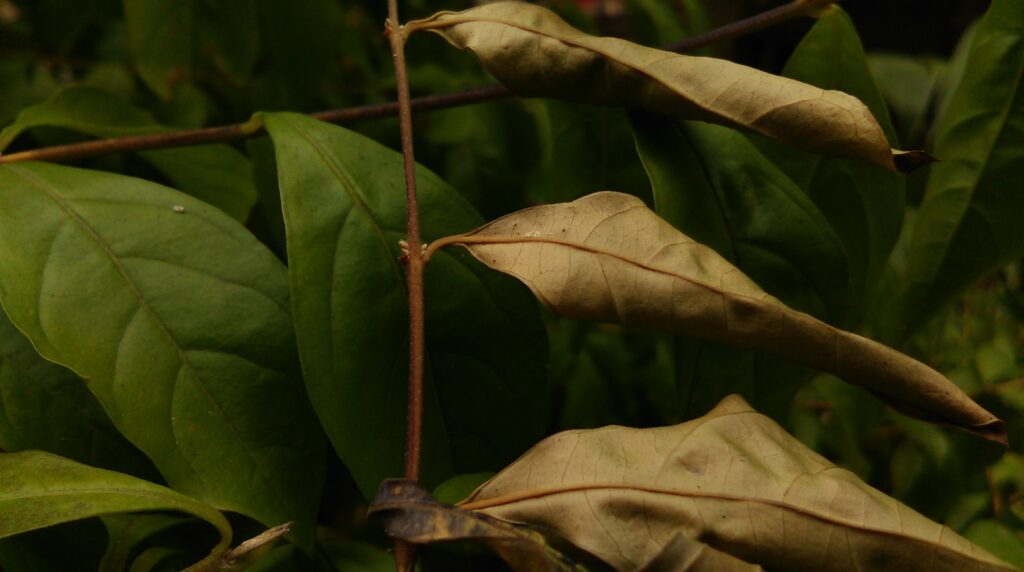
Houseplants show stress in different ways when it gets too hot. Watch for wilting leaves, even if the soil feels moist, as this can mean the plant isn’t absorbing enough water.
Look for leaf edges that curl or turn brown. This is a sign your plant is losing water faster than it can replace it.
Dry, brown patches on leaves can be a sign of leaf scorch caused by strong sun or dry air. Spotting these signs early lets you adjust your care before things get worse.
If you notice wilting, curling, or browning, move your plant to a cooler spot and check your watering routine. Paying attention to these signals can help you protect your plants through the hottest days.
Use lightweight, breathable pots to prevent root overheating

Heavy or dark pots can trap heat and make your plant’s roots uncomfortably warm. Switching to lightweight pots made from breathable materials can help keep roots cooler.
Terracotta and unglazed ceramic pots let air flow through and help water evaporate, which stops roots from getting soggy or overheated. Light-colored pots also reflect sunlight and reduce heat buildup.
Breathable pots may dry out faster, so check your plant’s water needs more often during hot weather. The right pot makes a big difference in helping your houseplants beat the heat.
Avoid sudden changes like repotting or pruning in heatwaves

Big changes can shock your plants, especially when they’re already stressed from high temperatures. If possible, wait until cooler weather to repot or do major pruning.
Repotting during a heatwave can disturb the roots and make it harder for your plant to recover. Pruning removes leaves and branches that help shade the plant, increasing the risk of sunburn.
If you need to prune, do it early in the morning when it’s cooler. Only remove dead or completely dried parts for now and save bigger projects for when the heat breaks.
Group plants together to create a microclimate
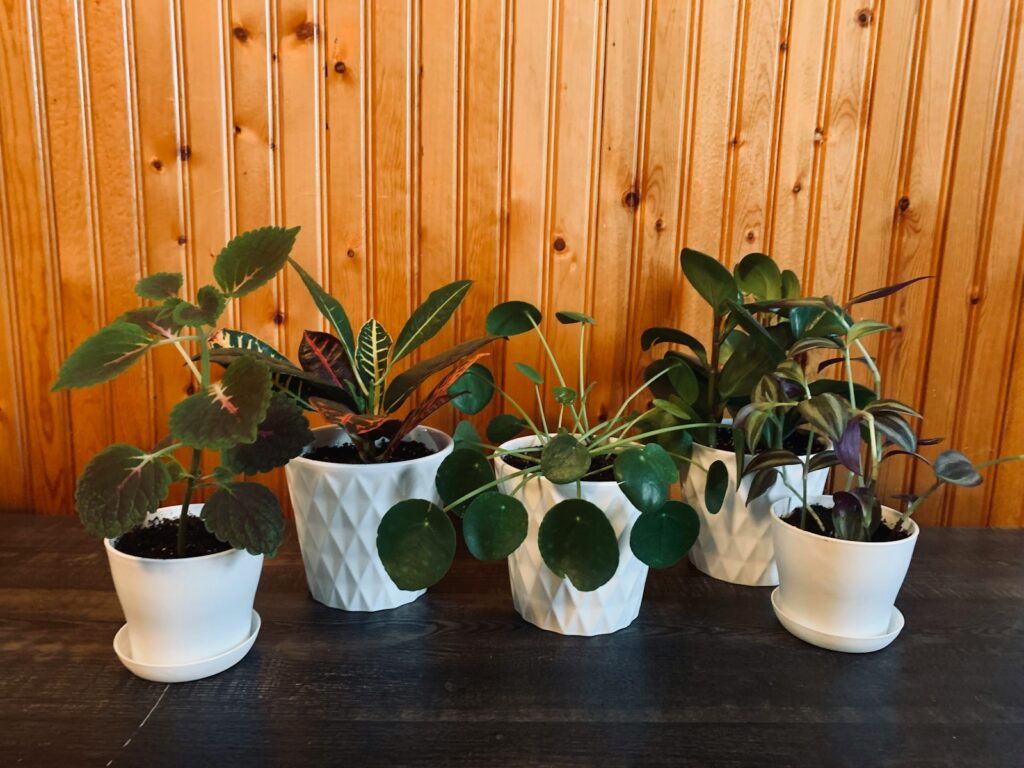
Placing your houseplants close together helps them create a shared, more humid environment. This is especially helpful for tropical plants that crave moisture.
Grouped plants release moisture through their leaves, which builds up and keeps the air around them more humid. This natural boost helps prevent leaves from drying out or turning brown.
Try to keep plants with similar needs together. Their leaves help trap warmth and moisture, making the whole group more comfortable during hot spells.
Grouping also shields plants from hot, dry air or drafts. For an extra humidity boost, combine this setup with misting or a small humidifier nearby.
Understanding Plant Stress in Hot Weather
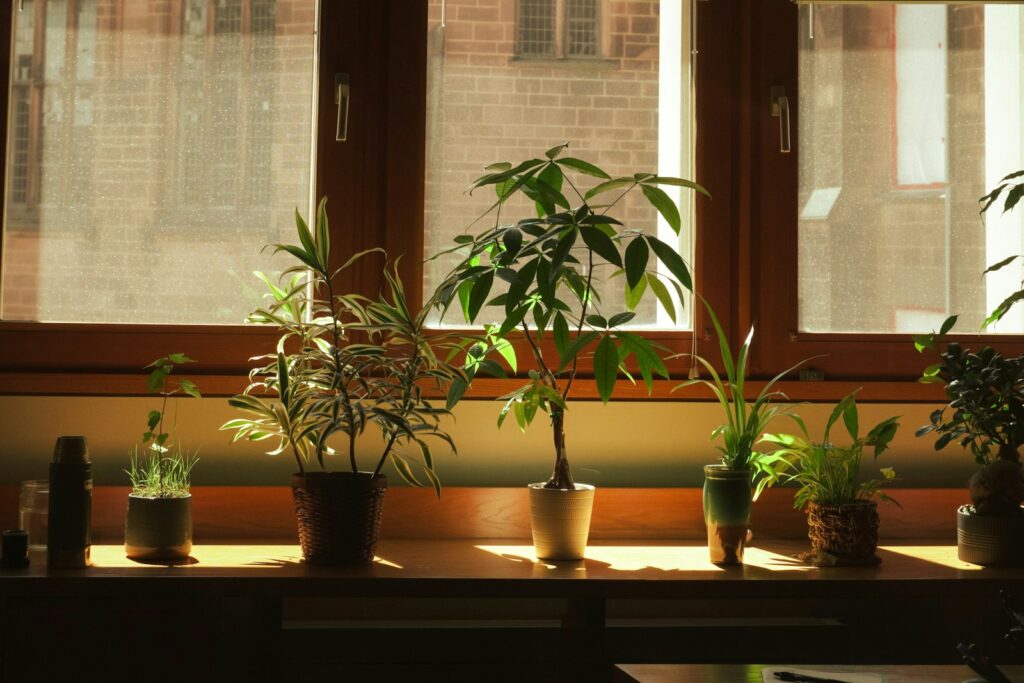
When temperatures climb, houseplants can start to struggle. Heat affects how well they use water and how quickly they grow.
Watch for changes in leaves and overall health to catch problems before they get worse.
How High Temperatures Affect Indoor Plants
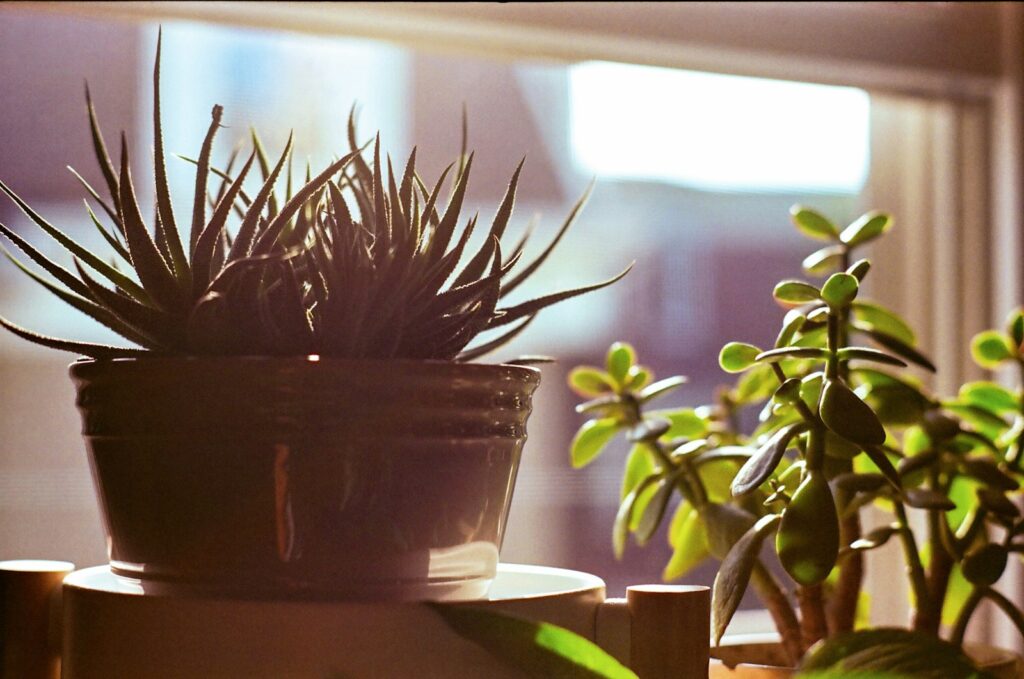
High heat makes it tough for plants to hold on to moisture. You might notice leaves drying out or browning at the edges.
When the air is warm, plants use water faster than usual, which can lead to wilting. Growth may slow down as plants focus on surviving instead of producing new leaves or flowers.
To help, keep plants out of direct sunlight during the hottest parts of the day. Moving them to cooler spots or using a fan can also lower the temperature around them.
Signs Your Houseplants Need Help
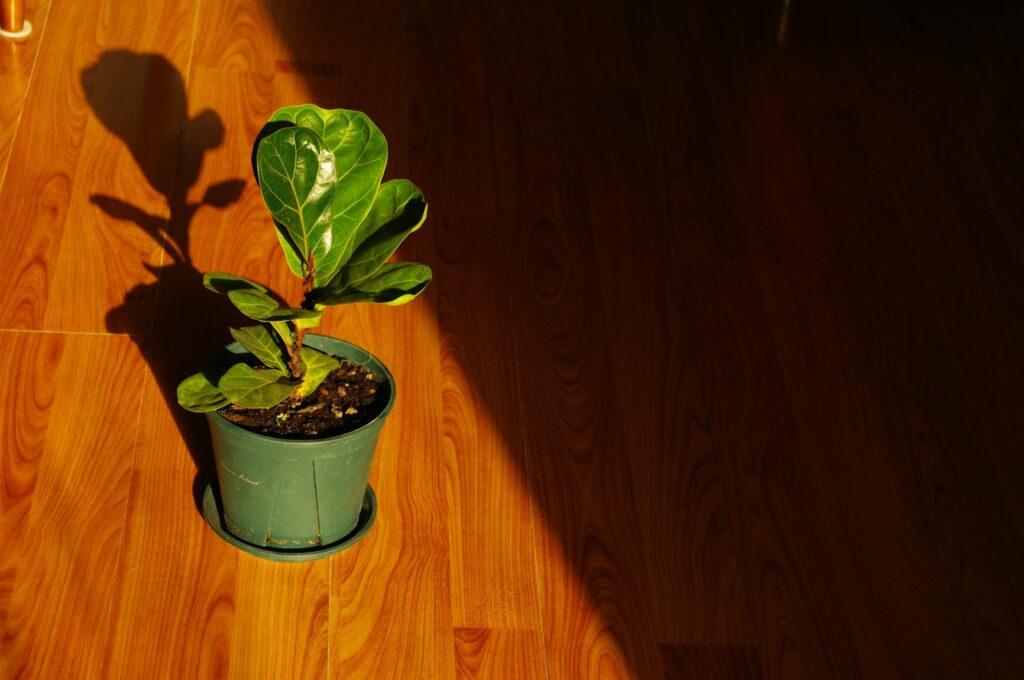
Check your plants’ leaves for early signs of heat stress. Look for curling or rolling leaves, dry or brown edges, wilting even after watering, or leaves that look pale.
If you see these signs, your plant needs relief from the heat. Avoid fertilizing or pruning during hot spells and focus on providing water and shade.
Soil that dries out quickly and feels hot is another clue your plant needs more moisture and a cooler spot.
Creating the Ideal Microclimate
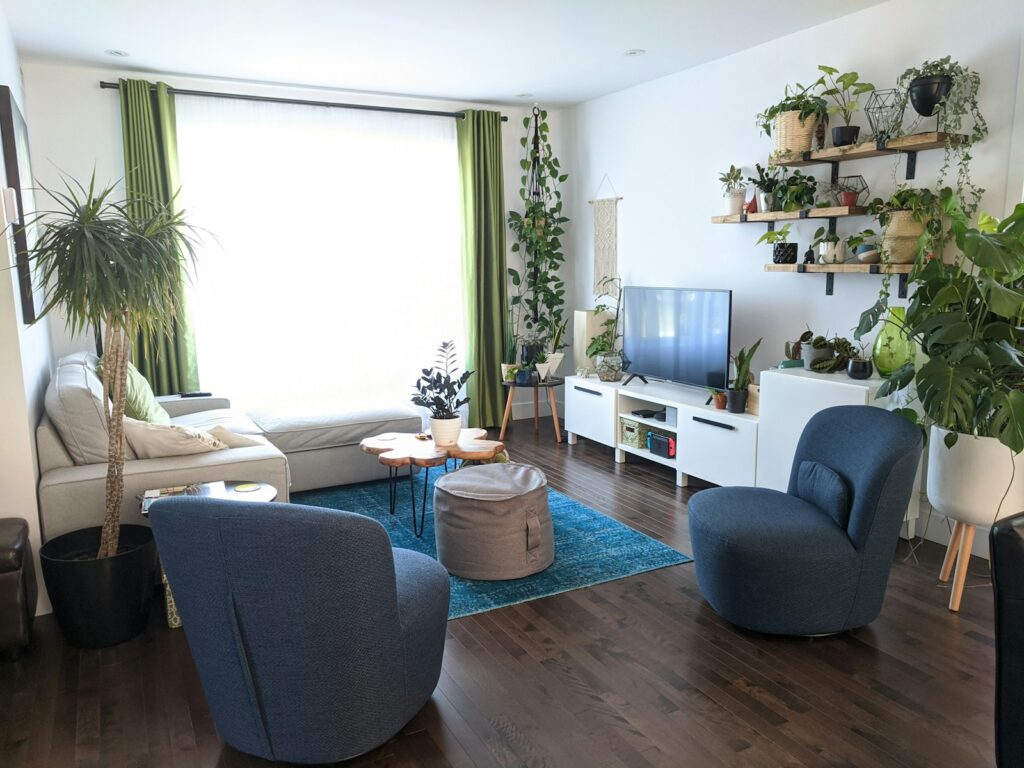
During hot weather, raising humidity and keeping plants away from direct heat sources can make a big difference. These simple steps help your houseplants stay cool and hydrated.
Using Humidity Trays and Pebble Dishes
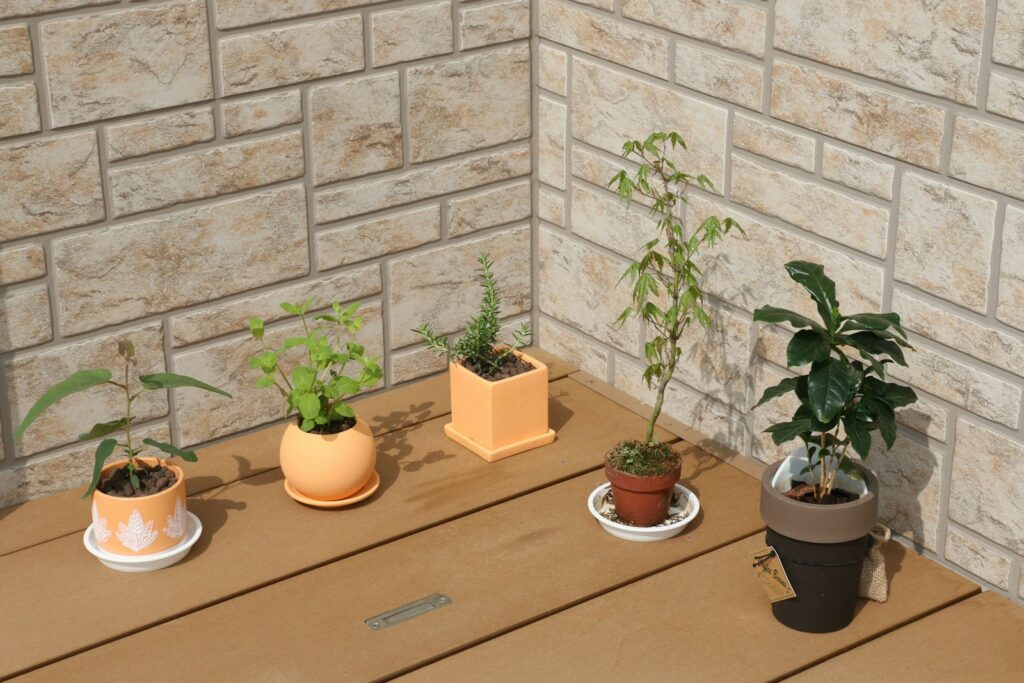
Increase humidity by setting up a tray filled with water and pebbles. Place your plant pots on top of the pebbles so the bottoms don’t touch the water.
As the water evaporates, it creates a more humid environment around your plants. Keep the water level topped up and avoid letting pots sit directly in water to prevent root rot.
Misting plants lightly or using a small humidifier nearby can also help, especially if you have several plants grouped together.
Safe Placement Away From Heat Sources
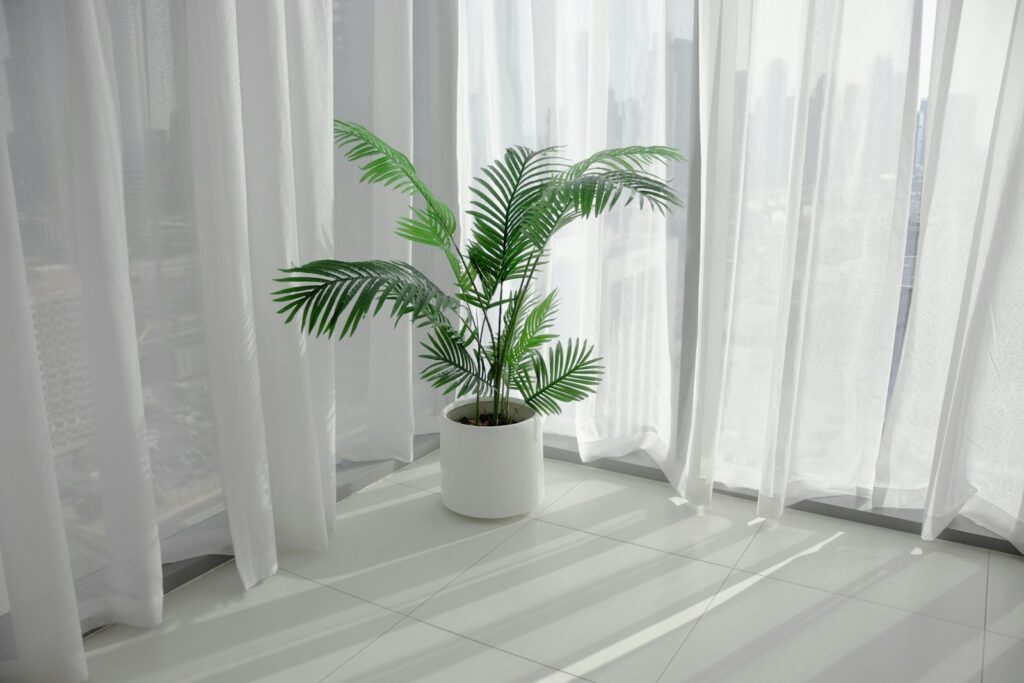
It can be tough to find the perfect spot for your plants, especially when temperatures start to fluctuate indoors. Placing them near radiators, heaters, or even right in front of a sunny window can dry out their leaves and cause stress.
Look for a place where air moves around but stays cool. Keeping plants away from vents that blow hot or dry air helps prevent damage.
A spot near a shaded window provides gentle, indirect light without overheating your plants. If you start to see leaf curling or browning, try moving your plant a few feet away from the heat source.
Small changes in placement can make a noticeable difference in your plant’s comfort and health.

